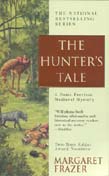A MEDIEVAL YEAR IN ENGLAND:
JULY
No tempest,
Good July
That
short verse sums up the greatest need of the month – good weather for
the haying. To the Saxons this was Hey-monath or Maed-monath, named for
the meadows being at their fullest flowering. For the haying,
workers began each morning as soon as the dew was dried and went on
until the evening dew fell. They stayed in the fields all day, even to
eat, but by custom usually took an hour of rest and sleep at mid-day.
The hay not only had to be cut but turned over in its swathes for
better drying, then raked and lifted up and built into haycocks to shed
rain and dew until finally fully dry. Only then could it be collected
and carted for piling into haystacks. The amount of hay that could be
cut and stored during the summer was of major importance because it
determined how many animals could be kept over the winter for the next
year’s flocks and herds. A poor haying meant most of the livestock
might have to be killed come the autumn. The fewer animals which could
be kept, the poorer the next year would be. So good weather with little
rain was a necessity all through July until haying ended near
Lammastide at the beginning of August. At the same time the work
days owed to the lord of the manor were at their heaviest, his hay
harvest also needing to be mowed, tossed, cocked, stacked as well as
all the other work tended to as well. And with the good weather
building work went on, with repairs to mills and the setting up of
folds, pens, and fishing weirs. Barley, oats, peas and beans needed
weeding. Blacksmiths were kept busy making and repairing scythes,
sickles, and hay forks. On the moors there was danger of
bracken-poisoning of sheep and cows, with extra care needed there,
although as soon as the haying was done, the fields would be opened to
the cows for grazing and the sake of having their dung dropped there. Closer
to home, beekeeping was particularly vital, since honey and wax were
used in every household. Honey was the main sweetener (sugar being an
expensive import from abroad) and also used in medicines and in mead
and its by-products in dyes. So most people kept their own bees,
maintaining the hives and processing and storing the honey and wax. Among
other things happening, the flax and hemp crops were ripening. Flax was
grown by most households for their cloth needs, with the extensive
labor needed to change the flax from plant to linen thread mainly the
housewife’s task. So was preparing the hemp needed for making ropes
stronger than the common ones made of twisted straw. Along with
all of that, this was the hottest time of year. On July 3 the
proverbially hot Dog Days officially began (and went on until August
11), named from the Roman idea that the heat and attending diseases of
these days were connected to the rising and setting of the Little Dog
Star, Canicula. For those with leisure to hunt, the roebuck was
still officially in season but the summer months were commonly treated
as a time of grace, with no hunting until Holy Rood Day in September. With
so much pressing work on the land, there were no major Church holidays
to distract folk, but according to folklore, rain on St. Swithin of
Winchester’s day, July 15, meant the saint had “christened the little
apples” and there would be rain more or less for the next forty days.
In southern England, at least, folk gave the priest farthings in church
on St. Swithin’s day.
St. Swithin’s Day, if thou dost rain,
For forty days it will remain;
St. Swithin’s Day, if thou be fair,
For forty days ‘twill rain nae mair.
It
was a mixed blessing either way, because too much rain would spoil the
haying but some rain was needed for all the crops waiting to be
harvested come August and the autumn. The hardest work of the year was
only partly done by the time July ended. 
Summer 1448 - Margaret |